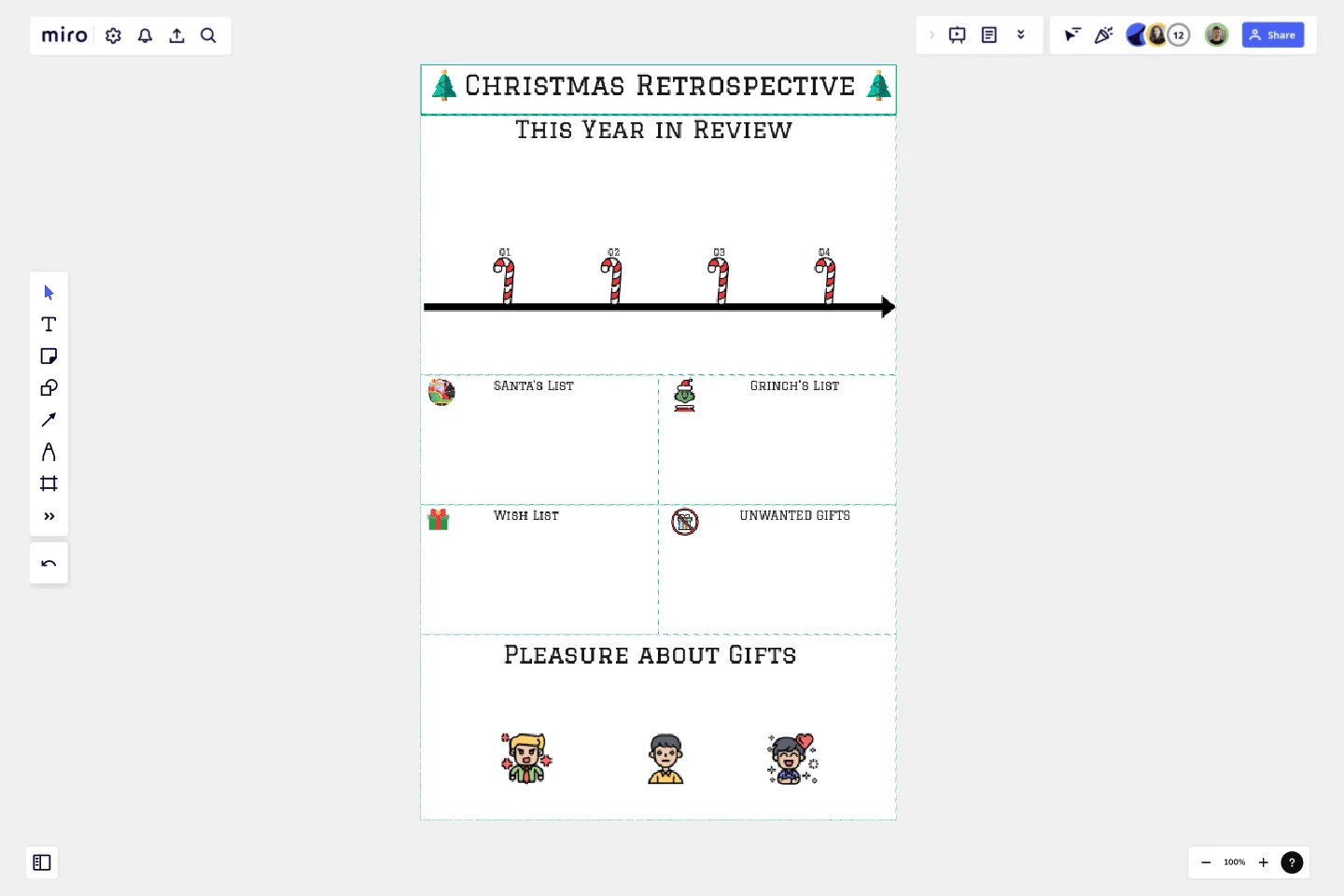Christmas Retrospective
Close the year with the teams with the Christmas Retrospective.
Do you want to look back with the teams and have a clean closing of the year? Then you can use this template of the Christmas Restrospective.
With this template you will have a look back to the year with the team and then begin to shape the future for the next year.
With the containing moderation hints you will have the base for a successful retrospective with your team (Delete them before you start the Retrospective).
Discover how Miro's retro tool can help you run more engaging and inclusive retrospective sessions.
This template was created by Andrea Egli.
Get started with this template right now.
Start, Stop, Continue Template
Works best for:
Retrospectives, Meetings, Workshops
Giving and receiving feedback can be challenging and intimidating. It’s hard to look back over a quarter or even a week and parse a set of decisions into “positive” and “negative.” The Start Stop Continue framework was created to make it easier to reflect on your team’s recent experiences. The Start Stop Continue template encourages teams to look at specific actions they should start doing, stop doing, and continue doing. Together, collaborators agree on the most important steps to be more productive and successful.
Lean Procurement Canvas
Works best for:
Agile
The Lean Procurement Canvas is a visual tool for optimizing procurement processes by applying Lean principles. It provides a structured framework for defining customer needs, identifying waste, and streamlining procurement activities. This template enables procurement teams to visualize their processes, identify improvement opportunities, and enhance efficiency and effectiveness. By promoting transparency and collaboration, the Lean Procurement Canvas empowers organizations to deliver value through optimized procurement practices.
Hiring Process Template
Works best for:
Operations, Org Charts, Kanban Boards
Having a hiring process in place simplifies that process each step of the way, from recruiting for the position to making finalizing offers. This simple, effective template will give you a straightforward, high-level view of where employees are as they move from applicant to new hire.
Random Words Template
Works best for:
Ideation, Brainstorming, Mind Mapping
Random word brainstorming is a simple, creative technique using random words to generate new ideas and creative solutions to your problems. Using random word prompts allows you to step beyond traditional boundaries and address challenges from a different direction. Random word brainstorming allows your team to unlock their creativity to solve business problems, create new inventions, improve existing ideas, or just think about problems in a new way.
Floor Plan Template
Works best for:
Operations, Workshops
Maybe you’re planning a big occasion or event. Or maybe you’re arranging seating structures and traffic flows that are more permanent. Either way, creating a floor plan—an overhead scaled diagram of the space—is equal parts functional and fun. This template will let you visualize how people will move about the space and know quickly if the space will do what you need, before you commit time, money, or resources. And you’ll be able to get as detailed as you want—finding the right measurements and dimensions, and adding or removing appliances and furniture.
Backlog Refinement with Jira Template
Works best for:
Agile, Backlog Refinement
The Backlog Refinement with Jira template in Miro improves collaboration among team members. It provides a visual and interactive space for teams to review, prioritize, and clarify upcoming work items together in real time. This collaborative approach ensures alignment on priorities and details, leading to a more organized and efficient workflow. The seamless integration with Jira automatically syncs all changes, reducing the need for manual updates and keeping both platforms up-to-date.
